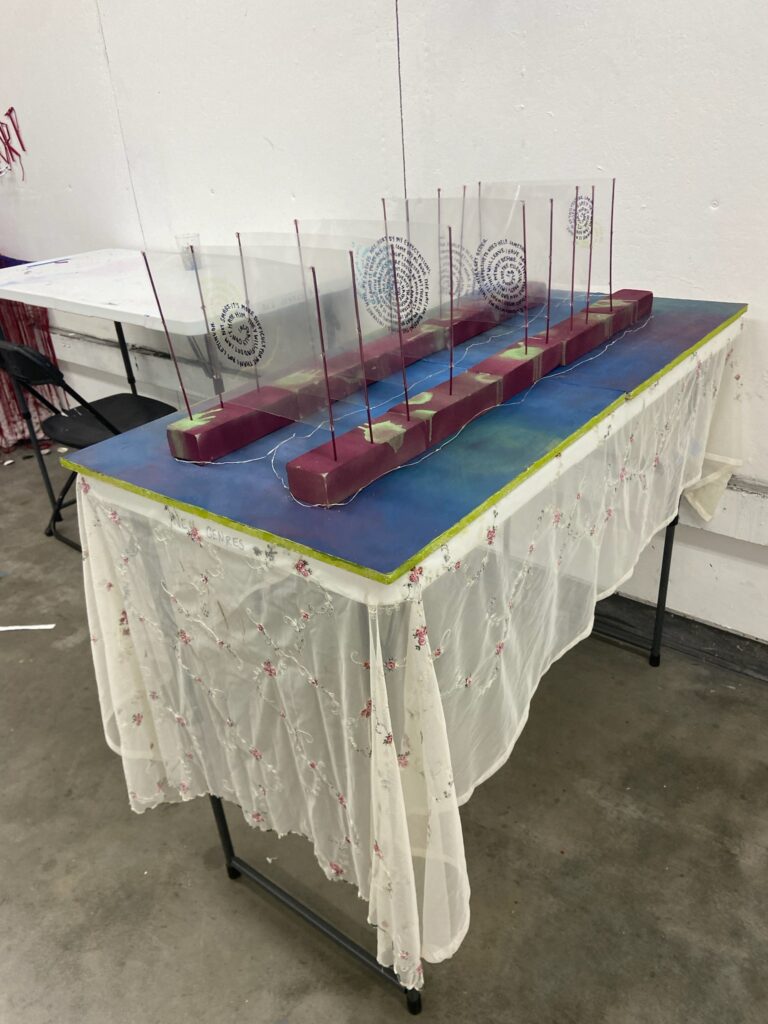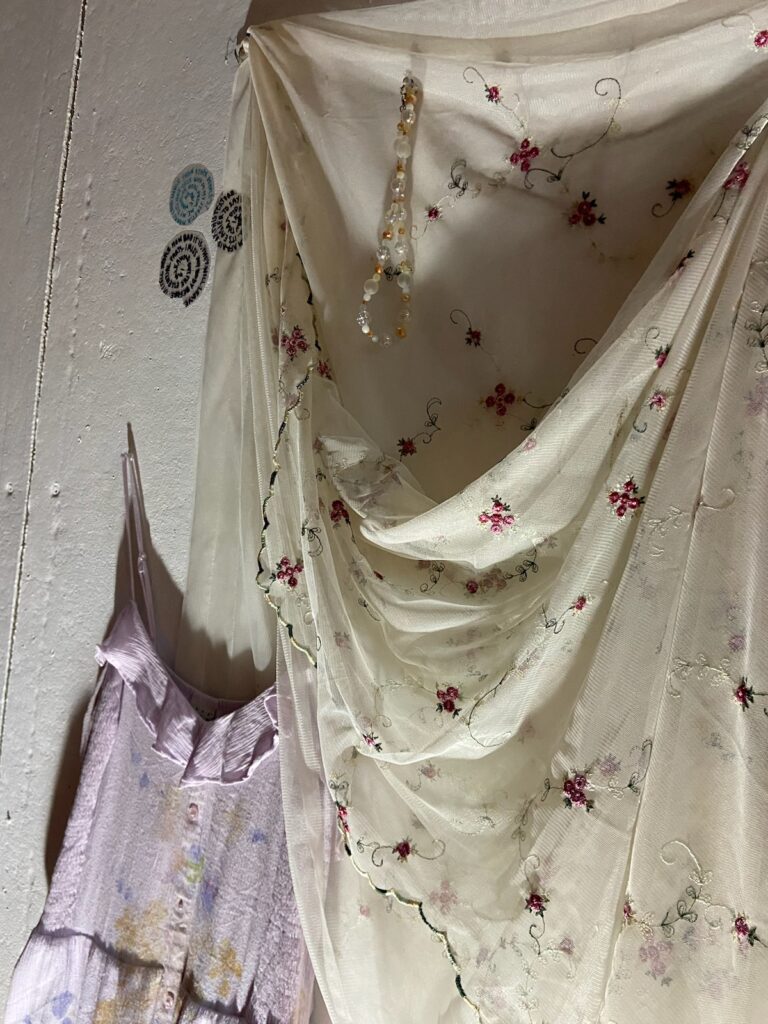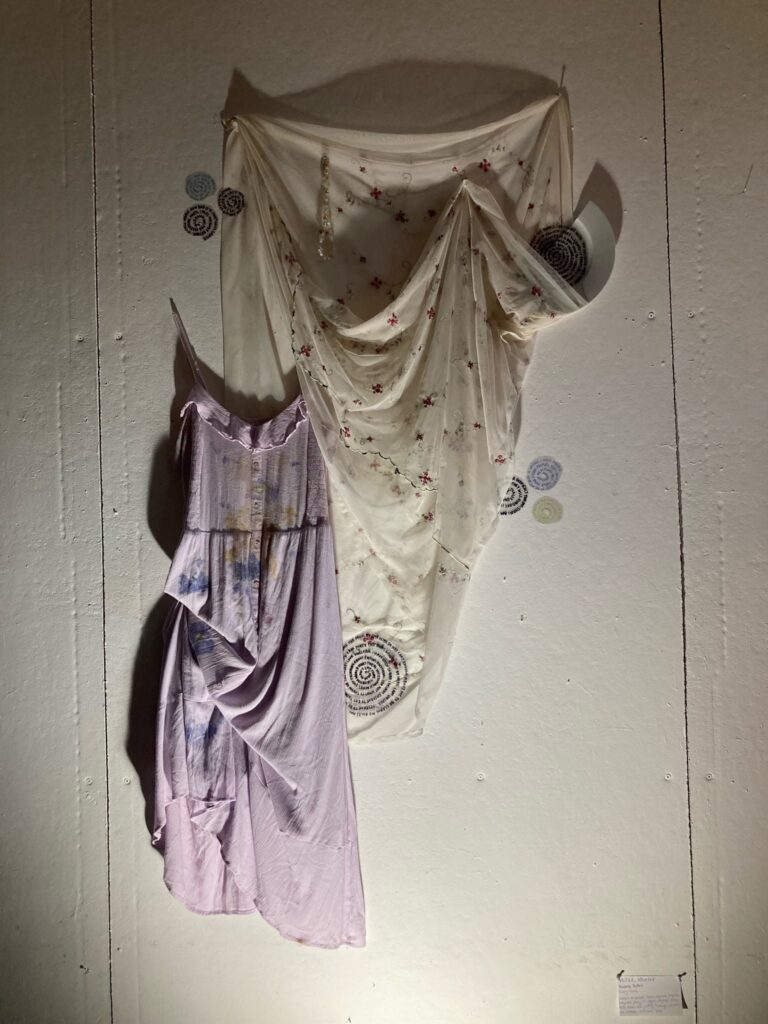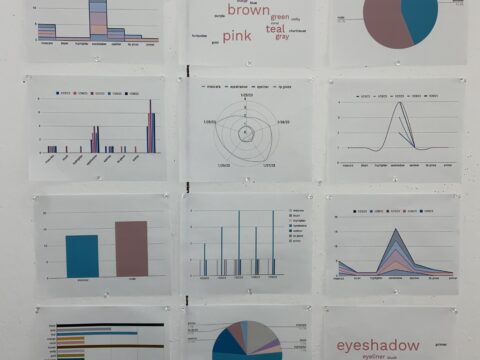

My conference work this semester was an experiment in depicting my difficulties with intrusive thoughts. To catalog this diary form, I began by noting every intrusive thought I experienced on Sarah Lawrence’s campus for a month. I put them all into a document and removed all repeated thoughts.
From there, I divided the thoughts into where locationally I had them most often. For each place where my thoughts tended to proliferate, I made a thought spiral on acetate that centered over that place on campus. I made this by creating a rudimentary map of the campus and laying the acetate sheets over the map to determine the center point of the thought spiral. I then wrote the intrusive thoughts in permanent marker in a spiral surrounding that point.
For the first iteration of my project, I struggled immensely in deciding how to display my thought spirals on acetate while preserving the embodied aspects of anxiety being a stressful thing to experience. I decided to attach each sheet to two stakes and stood those stakes in painted foam bricks over painted plaster sheets. To mask the table beneath the structure, I used a lacey curtain. The painted bricks were to show the weight of the thoughts and how they pulled me down, the plaster sheets were painted in a swirling blue to show the murky depths of anxiety and depression, and the lacey curtain served to show the attempts to dress up these awful thoughts. My hope with using these materials was that they would create an environment that meshed well with the thought spirals, but they felt entirely separate and different from the spirals.
Unfortunately, I ended up very unhappy with this display. It felt almost monumental when completed, like perhaps it was a mockup for a public park statue. And it was lit by string lights that made no sense at all. Throughout Critique Week, I received helpful, generative critiques that made me feel confident in a total overhaul of the project.



In my final iteration of the piece, I removed the weightiness and dark colors of the stakes, bricks, and plaster sheets and replaced them with found objects that had much more emotional weight to them. I found a broken plate from a day I had a panic attack and a fight with a good friend, a stained dress from a dance I wanted to go to with my partner who was abroad so I got crossed and stayed sad instead of seeing her, and a necklace I made while friends with a narcissist who warped my self-image beyond recognition. To the dress, I added more staining by hammering flowers down the front. I chose forsythia because they are rampant where I am from and where I experienced the hardest times in my life and pansies because they are a very hearty flower that somehow became a put-down name for people scared to do something. All of these motifs recur in my thought spirals as well so these new items blended much more effectively with the meaning of the piece than the old parts.
As for lighting, I was able to borrow a spotlight for the floor. I measured it out so that it was just far away enough to throw the shadows of the items far up the ceiling while making it hard to read the spirals without getting the light behind the viewer’s head. Often, intrusive thoughts and anxiety give me migraines and headaches and I wanted to create this experience for the viewers so that if they wanted to read the thoughts it would be uncomfortable to do so without feeling a bright light on the back of their head.

The overall image of the piece evokes feminity in a way that references the intrusive thoughts I experience about gender and expression via clothing, while the up-close parts of the piece show that pain in much more explicit ways, by including the actual intrusive thoughts. This delicate/harsh dichotomy serves to display the tension intrusive thoughts can create in day-to-day life for me. I am proud to have created such a personal piece as my conference work for this course, and its difficulties in execution make me feel that I really sat with my idea and did my best to communicate it as well as it could be communicated.

